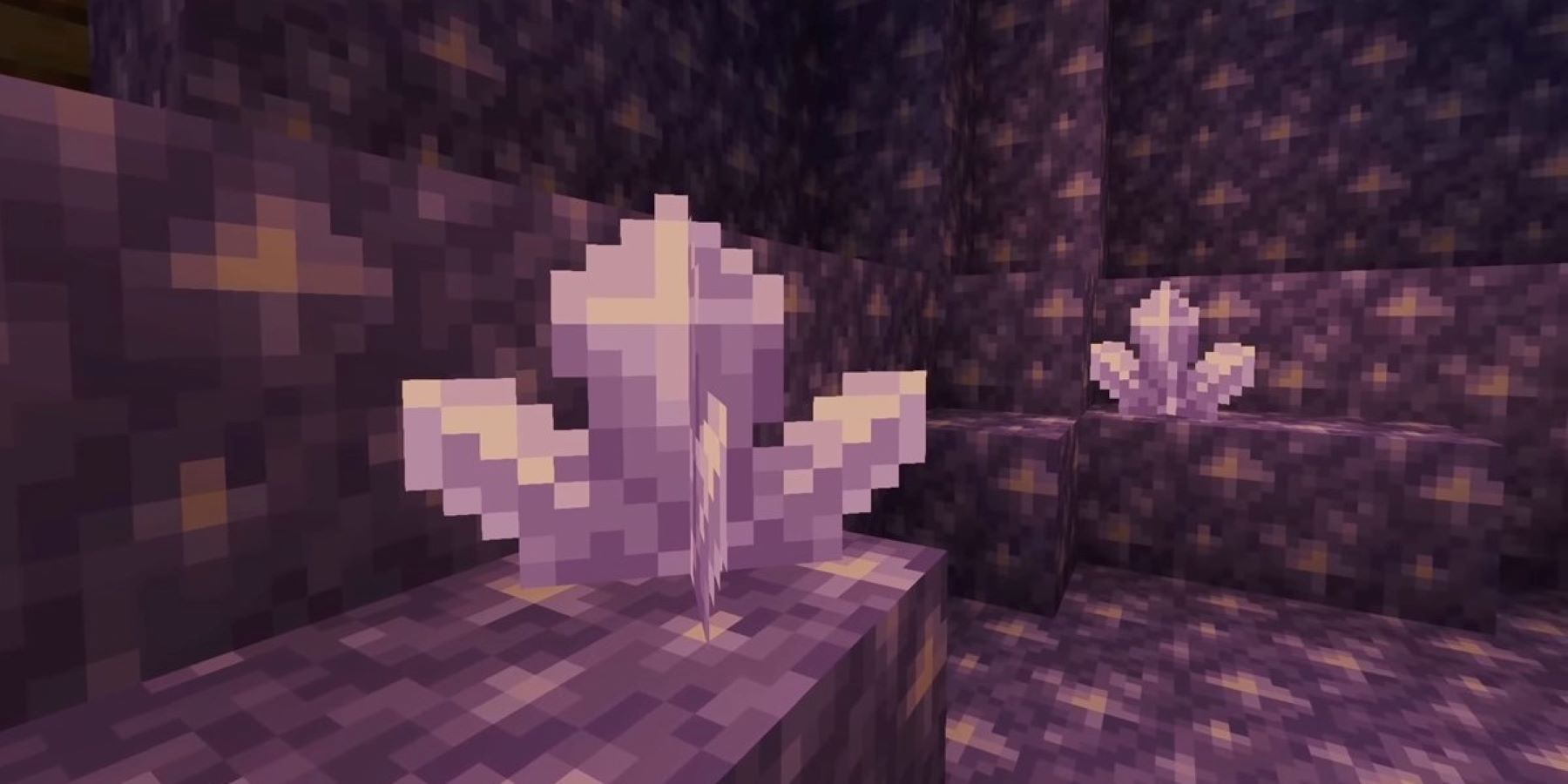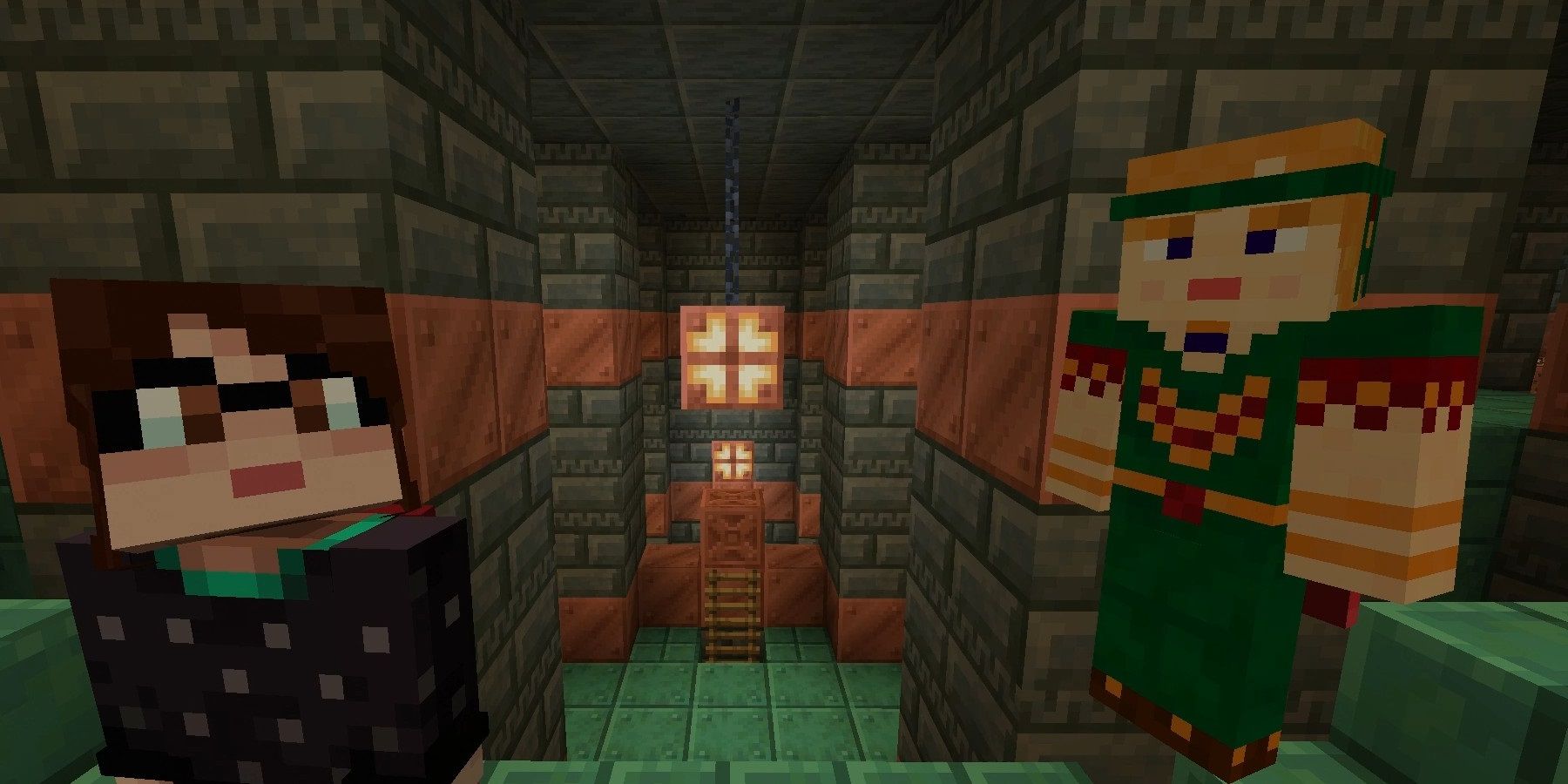More Decorative Possibilities for Underused Blocks in Minecraft

Minecraft 1.21’s changes to copper and tuff should inspire more updates
Minecraft’s 1.21 update is bringing new decorative variants to copper and tuff blocks, expanding their potential uses. While new features like trial chambers and auto-crafters have received more attention, these copper and tuff updates indicate the developers want to make underused blocks more relevant. There is opportunity to continue this trend with other blocks left behind in the ever-growing game.
Copper was initially disappointing to players due to lacking significant purpose beyond an early-game material. Its oxidation effect was interesting but not enough on its own. Version 1.21 is a step in the right direction by giving copper grating and bulbs, helping it feel more integrated as a decorative material. More importantly, it shows an openness to enhance block utility beyond basics. This approach could rescue other overlooked additions from being forgotten.
Amethyst needs more decorative potential
Amethyst was introduced alongside copper in the Caves and Cliffs update. While 1.21 expands its role in brewing and lighting, surprisingly there are still no shapes or items crafted exclusively from amethyst itself. With such a unique and beautiful block, it seems wrong not to allow creative expression through amethyst decorations.
Possibilities abound - amethyst could shape into pillars, fences, or smooth polished blocks. Its shards protruding from clay-like buds offer potential as colored molds too. Filled with dye and hardened, these molds might craft vibrant crystal sculptures enhancing builders’ palettes tremendously. A few decorative amethyst goods could boost player engagement far more than its current uses.
Calcite deserves stonework and pottery

Another Caves and Cliffs block, calcite geology resembles marble yet lacks similar decorative potential. Considering ancient civilizations crafted it extensively, the omission is strange. Calcite statuary, pillars, and geometric architectural pieces would bring more depth to stonebuilding.
Pottery production also seems a natural fit. Calcium carbonate, calcite’s main component, is commonly used in glazes and clay products. Textured calcite pots, urns or vases would enrich the game’s ceramic selection realistically. While geodes provide an interesting inclusion alone, expanding calcite’s role would honor its versatile real-world history.
Fungal flora needs love too

Minecraft’s fungi deserve decorative application inspired by their counterparts in nature. Nether wart blocks and shroomlight hang clustered as growths yet receive no crafting recipes. Letting these materials shape mushroom-like shapes would bring alien plants to builders.
Blooms formed from luminous shroomlight surrounded wart block stems could yield alien decorative plants. Mossy or vinesque blocks crafted from fungus matter might appear eerily organic. Crafting glowing fungus-based carpets or wallhangings could transport domestic spaces interdimensionally. Strange yet beautiful, these decor types would make the Nether’s bizarre ecosystem feel whole.
Blackstone and deepslate need contemporary updates
Obsidian’s popularity shows how tasteful contrasting accents appeal to players. Deepslate and blackstone already see wide use but could integrate newer aesthetic ideas maintaining their appeal.
Reinforced deepslate looks structural - combining it with bones into ornamental pillars or fencing might appeal. Instilling deepslate with flecks of color through industrial dyeing could yield options between dustier tones. Letting blackstone assimilate gemlike specks to emulate minerals would fascinate jewelcrafters. Consistently modernizing treasured blocks maintains interest where nostalgia risks tirin